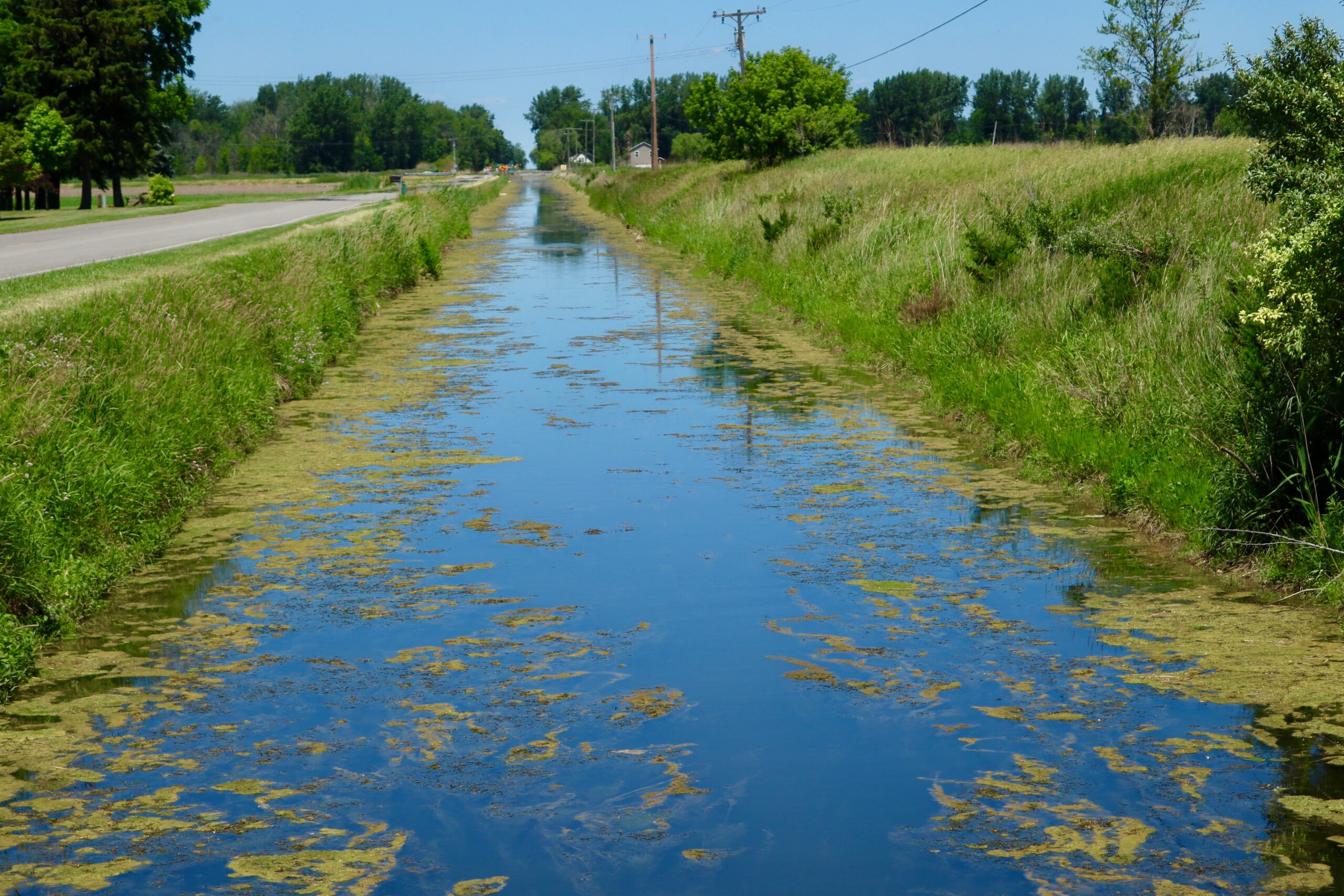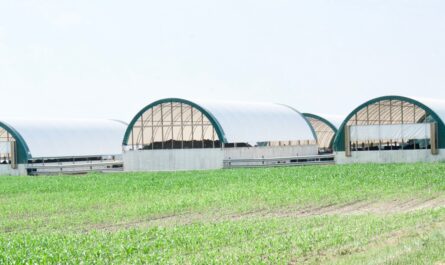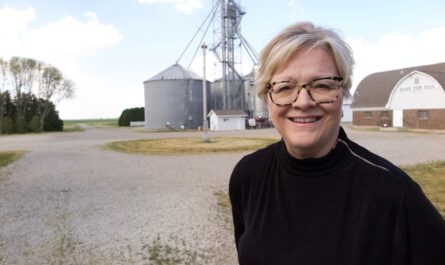In 1990, following intensive field trials, a respected agronomist at Iowa State University named Fred Blackmer formally introduced an inexpensive tool to accurately measure how much nitrogen farmers actually require to produce abundant harvests of corn, the most heavily fertilized crop.
Driven by concerns about rising production costs and increasing water pollution, Blackmer’s “late spring nitrate test†was stunningly simple in concept. His test focused on one essential data point: the optimum amount of nitrogen in soil to grow the most corn. His science showed that optimum soil concentration is 20 to 25 parts per million.

Blackmer developed three steps to get there. First, he took soil samples from farm fields, which typically showed background nitrogen levels at under 10 parts per million. Second, he developed calculations to add fertilizer in precise amounts to increase soil nitrogen concentrations to the optimum level and sustain it to meet the farmers’ yield goal, whether it was 150, 200 or 250 bushels per acre.
Then he recruited farmers to apply a little bit of fertilizer at planting and a precisely measured volume of fertilizer at least 30 days later, when fast-growing plants were 6 to 12 inches tall and needed the nutrient boost. In most cases the test counseled farmers to spread 60 pounds per acre to grow 150 bushels, and as much as 80 pounds for 250 bushels of corn.
Blackmer’s nitrate test, simultaneously basic and elegant, was nevertheless a radical departure from conventional corn cultivation and a rebuke to accepted fertilizing practices. It relied on painstaking measurement for how much fertilizer growing plants actually need, and not the much less precise broadcast nutrient applications as recommended by Iowa State and every other land grant university in the Corn Belt.
Corn Belt Nutrient Tsunami
The university-sanctioned approach to fertilizing is designed as an insurance program, encouraging farmers to apply nitrogen in quantities not aligned with crop needs but in amounts that reduce risk. It led to farmers applying fertilizer on fallow fields in fall when there is nothing growing to absorb the nutrient, and spreading fertilizer again on empty wet spring fields.
The idea, as farmers put it, is to “be safe†in case heavy rain at planting and in early growing stages wash away nutrients and reduce yields. Typically, farmers embracing the “safe†approach apply more than the university-recommended rates, depending on their location, ranging from 154 to 239 pounds of nitrogen per acre. A farmer survey in 2014 by Iowa State of nitrogen management practices showed how dependent growers are on over applying fertilizer. “The perceived economic risks of under-application are high,†the survey reported. “These results likely reflect a reality that the practice of “insurance†over-application is simply a part of staying in business.â€
Blackmer’s field trials, though, showed that the conventional “safe†approach to fertilization was anything but safe. It wasted farmers’ money. That’s because Blackmer showed that applying more fertilizer than plants needed — that is, pushing soil nitrogen concentrations to 30 or 40 parts per million — had no effect on yield. None. “What we’ve found is that farmers can substantially reduce their average rates of fertilization and actually end up with higher yields,†he told one interviewer.
Blackmer also recognized that over-fertilizing was causing an ecological calamity. Excess fertilizer was wrecking Iowa’s surface and ground waters. “What we’re finding is some farmers can lose 70, 80 or 90 percent of what they put down. One of the most surprising things is many times these farmers don’t even know that they have lost it,†Blackmer added.

Blackmer’s work showed unequivocally that corn growers were using 35 percent to 50 percent more nitrogen than was needed. In other words, Iowa corn farmers at the time were applying as much as 500 million more pounds of nitrogen each year than was needed for their corn crops. Nitrogen not taken up by plants just drained from the fields to contaminate state ground and surface waters
It’s gotten worse, state and federal data show. With increased acres of corn to supply ethanol refineries, and to feed big livestock and poultry operations, nitrogen spread on fields in Iowa and the other 9 major corn-growing Great Lakes and Midwest states has increased 26 percent since 1990, according to US Department of Agriculture statistics. Add to that the billions of gallons of liquid manure, and hundreds of millions of tons of nitrogen-rich manure and poultry litter that farmers now spread on farmland.
In other words, more nitrogen than ever is pouring off the land. In Iowa alone, according to state research, as much as 1 billion pounds annually. Most of it, according to Iowa’s nutrient testing network, ends up in streams that empty into rivers that empty into the Mississippi that empties into a mammoth oxygen-deprived hypoxic dead zone in the Gulf of Mexico. Iowa contributes almost a third of the nitrogen that causes the dead zone.
The United States has spent over $500 million since 1997 to reduce the expanse of the dead zone that measured 4,000 square miles in 1990. By 2017, as nitrogen levels in water increased in Iowa and the other Corn Belt states, it had more than doubled in size to 9,000 square miles, according to federal figures.
That same tide of nutrients currently contaminates 7,000 drinking water wells in Iowa an estimated 30,000 private wells in Minnesota, 42,000 in Wisconsin, and thousands more in Illinois, Nebraska, and Missouri. It forces Corn Belt cities to spend tens of millions of dollars and raise residential and business water rates in order to drill deeper wells or install and maintain nitrate removal and filtration systems to protect municipal drinking water.

This sign of opposition is north of St. Croix Falls, Wisconsin. (Photo/Keith Schneider)
Nitrates also are implicated in the rising rates of cancer in the Corn Belt. In Iowa and Nebraska scientists have linked exposure to nitrates to a number of soft tissue malignancies. Nebraska has one of the highest rates of pediatric cancers in the U.S. Iowa announced in February that it now ranks second in the incidence of cancer, and is the only state where incidences increased from 2015 to 2019.
More Than A Disgrace
There’s no way to describe farm-related nutrient pollution other than what it is – a national scandal. A tiny minority of Americans, half of one percent, is grossly fouling the waters for tens of millions of Americans and affecting the health of untold thousands. Corn Belt crop farmers, and livestock and poultry producers – the heart of the rich and powerful $618 billion American farm sector — have virtually unlimited opportunities within state and federal law to pollute at will. Crop producers, unregulated under the Clean Water Act, seek maximum production with no restriction on how much fertilizer they apply. Livestock and poultry producers, barely covered by the clean water law, treat farm fields as waste disposal zones for an ocean of untreated liquid manure and a mountain range of solid manure and poultry litter ripe with E. coliand other hazardous microorganisms. Polluting farm production practices, mostly overlooked by state environment departments, are defended by trade associations with lobbying offices in state capitals and allies from both parties in state Legislatures and in Congress.
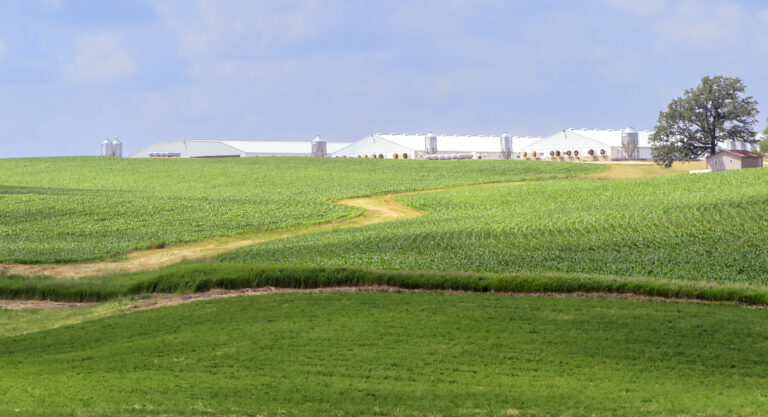
Industrial farm interests are loathe to talk about their work. Legislators, congressional offices, trade associations, farmers, livestock operators, and land grant university academics did not respond to interview requests for this article.
Since January I’ve been reporting the causes, consequences, and solutions to the farm sector’s assault on American waters with financial support from the Alicia Patterson Foundation, which also helped me secure a second grant from The Fund for Investigative Journalism.
The project focuses on nitrate pollution in the Corn Belt. It builds on expertise I gained reporting in 2022 for Circle of Blue on phosphorus pollution in Michigan and the Great Lakes states. Early reports from this year’s project have already been published in The New York Times, The Guardian, The New Lede, Circle of Blue, Minnpost, Investigate Midwest, Detroit Now, Michigan Radio, and my ModeShift blog.
To some extent, the tide of toxic nitrogen and phosphorus discharges from crop land and livestock operations is a well-recognized story not only in media, but also in government. Addressing it has resulted in an unsteady platform of responses over the last three decades held up by two of three legs.
The first is the considerable investment by states and the federal government in science. Billions of dollars have been spent on research and nutrient monitoring. America knows with great clarity the sources of nutrient contamination and the environmental, health, and economic damage it causes.

off farm fields and into streams and rivers. (Photo/Keith Schneider)
The second leg is convening. Tens of millions of dollars is spent every year to enable foundation staffs, non-profits, cities, counties, states, and the governments of the U.S. and Canada to easily communicate with each other. To hold meetings and conferences. To negotiate agreements. A community of scientists, staffers, and government officers has evolved that work on nutrient contamination and have known each other for years.
Science and convening – the ironclad research and the army of experts — should set the country up to install the third leg, which is actually halting nutrient pollution. It doesn’t. “Best management practices,†the conservation steps financed by the U.S. Department of Agriculture and many state governments, and relied on to deal with nutrient runoff were really designed to halt soil erosion. They don’t work to stem the flow of nitrogen into streams and groundwater. Other practices to reduce or halt nitrogen contamination are in development and largely exist outside the agricultural mainstream.
The one sure-fire solution is to dramatically cut how much nitrogen is spread on farmland.
My reporting is devoted to discovering these and other new details that produce fresh narratives about farm-related pollution. The intent is to elevate the scandal to greater public attention and motivate action by regulatory agencies, courts, Legislatures, and Congress.
Other new details are found in these five major elements of the project:
- The influence of formal fertilizer recommendations by land grant universities that serve as the scientific and economic justification for encouraging crop farmers to over-fertilize;
- The capacity of the American Farm Bureau and its allied farm trade associations to spend a scant amount of money on lawsuits and lobbying to defend the $618 billion farm sector from any effort to regulate nutrient discharges;
- Why ever larger and polluting dairies, feedlots, and poultry houses are migrating out of Iowa and into Wisconsin, the Dakotas, Minnesota, Missouri, and Nebraska and causing fierce civic protest where they land;
- Growing evidence of disease in regions where residents are exposed to nitrates in their drinking water;
- The myriad practices to prevent pollution–some decades old–that either never gained traction or exist at the far edges of mainstream agriculture.
A Notable Legacy
Fred Blackmer, who died in 2006 at the age of 62, lived long enough to see his tool not only disregarded but also tumble into the Corn Belt’s political and cultural free-fire zone over the consequences of industrial farming to water quality and public health.
The battleground is clearly defined. Opposing the powerful industrial interests are grass roots non-profits, citizen activists, and a Native American tribe–Minnesota’s White Earth Nation–who are passing local ordinances to stem the pollution. Prominent environmental law groups are filing lawsuits and pushing the U.S. Environmental Protection Agency to more stringently regulate farm practices that contaminate water. A handful of courageous academics are raising their voices in protest.
“Iowa is sort of ground zero for the interface between ag and environment,†said Matt Liebman, a colleague of Fred Blackmer’s who retired as a professor of agronomy at Iowa State in 2021. “There’s a lot of money involved. The people who sell inputs and the people who process and distribute commodities, livestock and crops are very interested in making sure that the system is arranged so that money flows in particular ways. And there are folks who kind of get in the way. There’s a massive asymmetry of wealth and power and mass. One side is real small and the other side is very well funded. It can get pretty ugly.â€
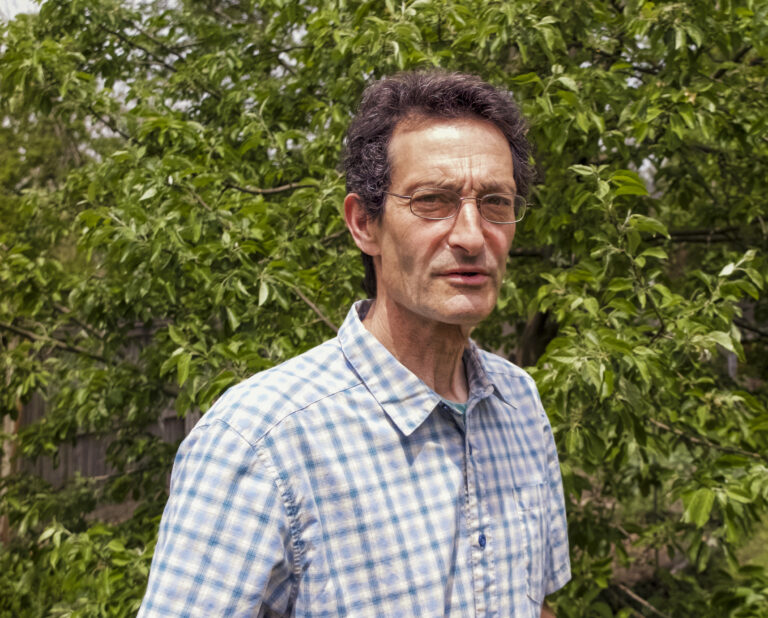
and an expert in sustainable farm practices. (Photo/Keith Schneider)
How ugly was on display earlier this year in Iowa when two senior Republican Iowa state senators pressured the University of Iowa into taking down a widely read university-sponsored blog that aggressively reported on farm-related nutrient contamination. The blog’s author, Chris Jones, a Ph.D. chemist and research engineer, was the one of the state’s top water quality researchers who built and managed a statewide network of 66 continuous nutrient monitoring stations.

conservative lawmakers outraged by his aggressive reporting on farm nutrient pollution. (Photo/Keith Schneider)
Data from the stations, digitized 24/7 and available on an internet map, showed nitrogen contamination in Iowa’s streams was getting steadily worse. Jones wrote about the trend in articles for peer-reviewed journals and on his blog, which attracted thousands of readers.
One station that regularly reported some of the highest concentrations was downstream from a cattle feedlot owned by the son-in-law of the chairman of the Iowa Senate Agriculture Committee, who silenced the blog and also succeeded in passing legislation to end state funding for the monitoring stations. Jones resigned his senior research position at the university. Iowa State has oversight of the monitoring network. It said operations would continue while it sought other sources of funding.
“Future generations of Iowans will think about this: We knew our water was degraded. We knew what caused the degradation,†Jones wrote. “We didn’t fix it because we lacked the courage to confront the forces that kept us locked into a status quo preferred by only a few.â€
American agriculture is driven by inventions of engineering and science crucial to the development of the most productive farm sector on Earth. Eli Whitney invented the cotton gin in 1794 and John Deere perfected the steel plow 43 years later. German scientists Fritz Haber and Carl Bosch discovered how to convert atmospheric nitrogen into ammonia in the early 20th century. Iowa-born agronomist Norman Borlaug won the 1970 Nobel Peace Prize for developing high-yielding wheat and rice.
Had his soil test been embraced and promoted by agricultural universities, the state corn growers association, and extension agents, Fred Blackmer would have merited inclusion on that list. His late spring nitrate test would have saved money, saved lives, and impeded and possibly even eliminated the swelling tide of farm nutrients now causing worsening water contamination across Iowa and the other corn and livestock producing states in the Midwest and Great Lakes.
— Keith Schneider
This article, a report from the Toxic Terrain project, initially appeared on the Alicia Patterson Foundation’s Web site. The foundation awarded a fellowship to undertake the project.
